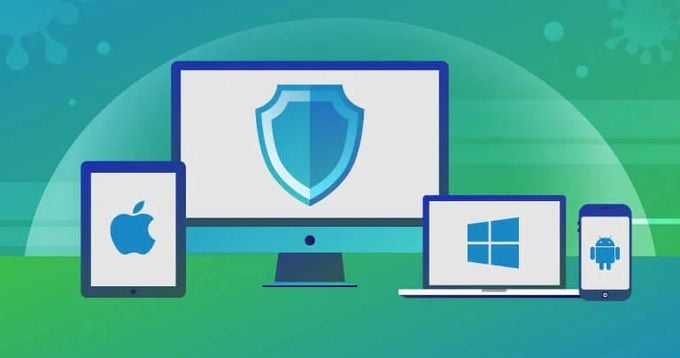All You Need to Know on How We Test Antivirus and Security Software

In today’s digital age, antivirus and security software are essential for protecting our devices and sensitive information from cyber threats. With so many options available in the market, it’s crucial to choose the right antivirus and security software that fits your needs. One way to ensure the effectiveness of antivirus and security software is through testing. In this article, we will explore how we test antivirus and security software, the different types of tests, and the factors we consider.
The Importance of Antivirus and Security Software Testing
Testing antivirus and security software is crucial in ensuring the protection of our devices and data. Antivirus and security software are designed to detect and eliminate cyber threats, and testing helps determine their effectiveness. Testing also helps identify any weaknesses or vulnerabilities in the software, allowing developers to make necessary improvements. Without testing, antivirus and security software may not be reliable in protecting against emerging cyber threats.
Overview of the Testing Process
Antivirus and security software testing involves a series of tests designed to evaluate the software’s effectiveness in detecting and eliminating cyber threats. The testing process includes various stages, such as design, implementation, execution, and reporting. The testing process may vary depending on the type of test conducted and the organization performing the test.
Types of Tests Performed
There are different types of tests performed to evaluate antivirus and security software. Some of the commonly performed tests include:
Malware Detection Test
Malware detection test evaluates the software’s ability to detect and eliminate different types of malware, including viruses, Trojans, worms, and ransomware. The test involves exposing the software to various malware samples and measuring its detection rate.
False Positive Test
False positive test evaluates the software’s ability to detect false positives. False positives are legitimate files or applications that the software identifies as malware. High false positive rates can be frustrating for users and can lead to unnecessary removal of legitimate files.
Performance Test
Performance test evaluates the software’s impact on the device’s performance. The test measures the software’s impact on the device’s boot time, file copying, and browsing speed.
Usability Test
Usability test evaluates the software’s ease of use and user interface. The test assesses the software’s installation process, configuration, and user interface.
Test Criteria and Standards
Testing organizations use different criteria and standards to evaluate antivirus and security software. Some of the commonly used test criteria and standards include:
Virus Bulletin
Virus Bulletin is a leading testing organization that sets standards for antivirus and security software testing. The organization’s tests evaluate the software’s detection rate, false positives, and performance.
AV-TEST
AV-TEST is a globally recognized testing organization that evaluates antivirus and security software based on detection rate, performance, and usability.
AV-Comparatives
AV-Comparatives is an independent testing organization that evaluates antivirus and security software based on detection rate, false positives, and performance.
Testing Methodologies
Testing organizations use different methodologies to evaluate antivirus and security software. Some of the commonly used methodologies include:
Real-World Testing
Real-world testing involves exposing the software to real-world cyber threats. The test evaluates the software’s effectiveness in detecting and eliminating real-world malware.
Static Testing
Static testing involves analyzing the software’s code without executing it. The test evaluates the software’s code for vulnerabilities and weaknesses.
Dynamic Testing
Dynamic testing involves executing the software in a controlled environment to simulate real-world scenarios. The test evaluates the software’s effectiveness in detecting and eliminating malware.
Common Challenges in Antivirus and Security Software Testing
Antivirus and security software testing can be challenging due to the constantly evolving cyber threats. New malware samples are created daily, making it difficult to test all possible variations. Additionally, testing organizations must ensure that their testing environments are secure to avoid infecting their devices.
Tools and Software Used in Testing
Testing organizations use different tools and software to evaluate antivirus and security software. Some of the commonly used tools and software include:
Virtual Machines
Virtual machines are used to create a secure testing environment for antivirus and security software. The virtual machine allows testing organizations to execute malware samples without infecting the underlying operating system.
Sandbox
Sandbox is a secure testing environment that allows testing organizations to execute malware samples in a controlled environment. The sandbox isolates the malware from the underlying operating system, preventing it from infecting the device.
Automated Testing Tools
Automated testing tools are used to streamline the testing process. The tools automate the testing process, reducing the time and effort required to test antivirus and security software.
Top Antivirus and Security Software Testing Organizations
There are many testing organizations that evaluate antivirus and security software. Some of the top organizations include:
Virus Bulletin
Virus Bulletin is a leading testing organization that evaluates antivirus and security software based on detection rate, false positives, and performance.
AV-TEST
AV-TEST is a globally recognized testing organization that evaluates antivirus and security software based on detection rate, performance, and usability.
AV-Comparatives
AV-Comparatives is an independent testing organization that evaluates antivirus and security software based on detection rate, false positives, and performance.
How to Choose the Best Antivirus and Security Software
Choosing the right antivirus and security software can be overwhelming due to the numerous options available in the market. When choosing antivirus and security software, consider the following factors:
Detection Rate
Choose antivirus and security software with a high detection rate. The software should be able to detect and eliminate different types of malware, including viruses, Trojans, worms, and ransomware.
Performance
Choose antivirus and security software that does not impact the device’s performance. The software should not slow down the device or affect its boot time, file copying, and browsing speed.
Usability
Choose antivirus and security software that is easy to use and has a user-friendly interface. The software should be easy to install, configure, and use.
Conclusion
Antivirus and security software testing is crucial in ensuring the protection of our devices and data from cyber threats. Testing organizations use different types of tests, criteria, and standards to evaluate antivirus and security software. When choosing antivirus and security software, consider the software’s detection rate, performance, and usability. By following these guidelines, you can choose the best antivirus and security software that fits your needs, ensuring that you stay protected online.
”















